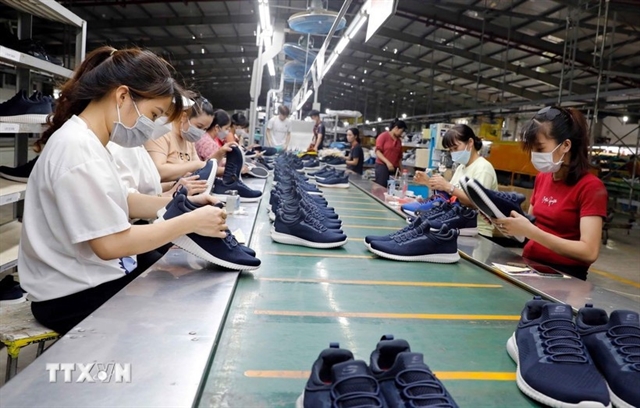 Economy
Economy

 |
| Custard apples are packaged for export in Tây Ninh Province. The falling freight rates appear to be a boon for Vietnamese agricultural products. VNA/VNS Photo Thanh Tân |
HÀ NỘI — Freight rates are expected to tank in 2023 as the competition among carriers soars in the wake of container oversupply.
According to Drewry Shipping Consultants, the container market will witness the largest number of box ships hitting the water in 2023, adding 2.5 million TEU to the global capacity.
The inauguration of the vessels will cause freight rates to fall steadily during the year as carriers enter fierce competition for customers amid the economic downturn.
Alphaliner shares this view, saying that shipbuilding orders are growing to the highest figure since 2012. In 2023, newly-built vessels would increase the global capacity by between 4.4 to 4.8 per cent.
Meanwhile, global trade is expected to inch up by between 0.9 to 2.7 per cent owing to the global recession, resulting in a shipping overcapacity that drives down freight rates.
VnDirect also has a pessimistic outlook for carriers this year as the global economic slowdown is dealing its blow to maritime trade.
Remarkably, the Freight Rate Index has dropped by 67 per cent against its peak in September 2021. The Baltic Dry Index followed suit with a drop of 71 per cent.
Given that there is generally a six- to 12-month time lag between a change in freight rates and the reflection of the change in revenues, carriers are expected to begin to feel the pinch between 2023 and 2024.
Falling freight rates are a bane for global carriers, but a boon for Vietnamese agricultural exporters, who had their profits eroded by high freight rates in the early months of 2022.
Nguyễn Đình Tùng, general director of the Vina T&T Group, opines that the favourable circumstance would enable a fall in prices among Vietnamese agricultural products, allowing them to sell better abroad.
"Lower freight rates will be passed on to cheaper agricultural products, which, in turn, result in a larger market reach," said Tùng.
According to experts, the downward trend in freight rates would consolidate the competitive advantage of Vietnamese agricultural products on the international market and ease the logistics cost burden on exporters.
However, an improvement in freight rates alone is not enough to cut their total logistics costs to the levels enjoyed by their foreign rivals because domestic transport costs in Việt Nam still take a huge share of the pie, putting them at a cost disadvantage.
Specifically, logistics costs account for between 20 to 25 per cent of the total costs incurred by Vietnamese agricultural exporters. Meanwhile, the figures are between 10 to 15 per cent for Thai exporters.
It is also worth noting that 70 per cent of Vietnamese agricultural exports have to travel a long distance to HCM City or Cái Mép Seaport before being shipped overseas. It is this mileage that adds substantially to their logistics costs.
Experts urge agricultural exporters to seek ways to reduce domestic transport costs further to improve their competitive position on the international market. They say that low logistics costs would hold the key to commercial success abroad. — VNS




